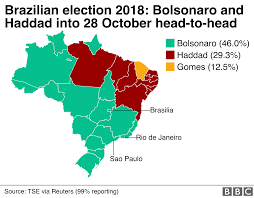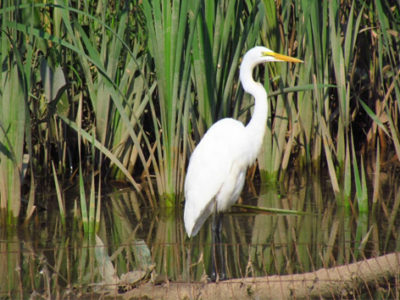Biodiversity & Species
The Power of the Purse
House Democrats have power to use appropriations process to stop Trump Administration environmental rollbacks
Dan has already posted about some of the big deregulatory steps the Trump Administration is likely to take in the next year. But the new Democratic majority in the House could have something to say about those steps, if they wanted to. Democrats will have even more leverage over spending bills than they had in …
Continue reading “The Power of the Purse”
CONTINUE READINGNo Restrictive Language on Gene Drives
Parties to the Convention on Biological Diversity reject a moratorium-like decision
The recent news in international environmental negotiations has been dominated by this month’s Conference of Parties (COP) of the UN Framework Convention on Climate Change. (See UCLA’s Ted Parson setting the stage, the New York Times article, and Carbon Brief’s detailed report.) The recent COP of the Convention on Biological Diversity (CBD) flew somewhat under the …
Continue reading “No Restrictive Language on Gene Drives”
CONTINUE READINGPublic Lands Watch: Sage Grouse Plans Move Forward
Administration takes next steps to scale back protections for iconic Western bird on federal public lands.
I’ve posted before about proposals by the Trump Administration to roll back protections for the sage grouse, an iconic species of the Western United States, from oil and gas development on federal public lands. (The initial blog post with background is here; the specific proposed revisions are here.) The Administration has now issued a final …
Continue reading “Public Lands Watch: Sage Grouse Plans Move Forward”
CONTINUE READINGSupreme Court Issues Narrow Decision in Dusky Gopher Frog Case, Leaving Key Questions About the Scope of Critical Habitat Unresolved for Now
Fifth Circuit Must Now Review Whether Designated Critical Habitat is “Habitat,” & Whether Agency’s Assessment of Costs and Benefits of Critical Habitat Designation Was Arbitrary
The U.S. Supreme Court filed its opinion in Weyerhaeuser v. U.S. Fish and WIldlife Service today. I’ve posted about this case previously here (when our clinic filed its brief on behalf of preeminent scientists) and here (on the day of the oral argument in the case). (Note that this blog post, like all my posts on this …
CONTINUE READINGVocê Fala Português?
Brazil’s New Environmental Crisis Raises Crucial Constitutional and Advocacy Issues
As Dan noted last week, and as E & E News reports today, Brazil’s President-Elect, Jair Bolsonaro, is not only an authoritarian quasi-fascist (no exaggeration in those terms), but is also horrific for the environment. And that, in turn, is not simply bad for Brazil and South America, but for everyone on the planet. In …
Continue reading “Você Fala Português?”
CONTINUE READINGAnother Scary Election (But Not Here)
An election next Sunday has implications for the entire planet.
I hate to give you something else to freak out about in our current Age of Anxiety, but there’s a very worrisome presidential election next Sunday. No, I haven’t completely lost it – the presidential race isn’t here, it’s in Brazil. The election pits a dangerous populist against a highly competent but colorless Establishment candidate. …
Continue reading “Another Scary Election (But Not Here)”
CONTINUE READINGComments on proposed ESA rule changes
Law professors submit detailed comments on proposed changes to regulations that implement the Endangered Species Act
I’ve posted earlier about proposals by the Trump Administration to make significant changes to the regulations implementing the Endangered Species Act, some of the most substantial revisions to those regulations since they were overhauled in the early 1980s. A group of environmental law professors (including me) submitted comments on those proposed rules last month, with …
Continue reading “Comments on proposed ESA rule changes”
CONTINUE READINGThe Endangered Species Act in the Supreme Court: Oral Argument Today in Weyerhaeuser v. US Fish & Wildlife Service
Post-Argument Panel at Georgetown Law Will Feature Advocates
Oral argument in Weyerhaeuser v. U.S, Fish & Wildlife Service is this morning, the first day (and first argument) of the new Supreme Court term. The Court will be short-handed, with only eight Justices hearing the case. I’ll be attending the argument and speaking on a post-argument panel at Georgetown Law School, along with other advocates …
CONTINUE READINGChesapeake
EPA needs to take a hand to keep the restoration plan on track. We’ll see how that goes soon.
The effort to restore Chesapeake Bay is something I knew vaguely about but had never looked into. A new on-line dashboard of relevant material inspired me to take a deeper dive. The restoration plan is definitely worth a closer look., It’s the U.S. leading effort to reduce“nonpoint source” water pollution such as agricultural runoff. It …
CONTINUE READINGSecretary Zinke Misleads the Public About Wildfires and Federal Public Land Management
Secretary of Interior’s Op-Ed Ignores Science and Land-Use Planning to Falsely Blame Wildfire Risk on “Radical Environmentalists”
Interior Secretary Ryan Zinke published an op-ed today calling for “active management” of our federal public lands to reduce wildfire risk, and blaming “radical environmentalists who would rather see forests and communities burn than see a logger in the woods” for the prevalance and lethality of wildfires in the American West. Zinke’s op-ed is disingenuous, …
CONTINUE READING







